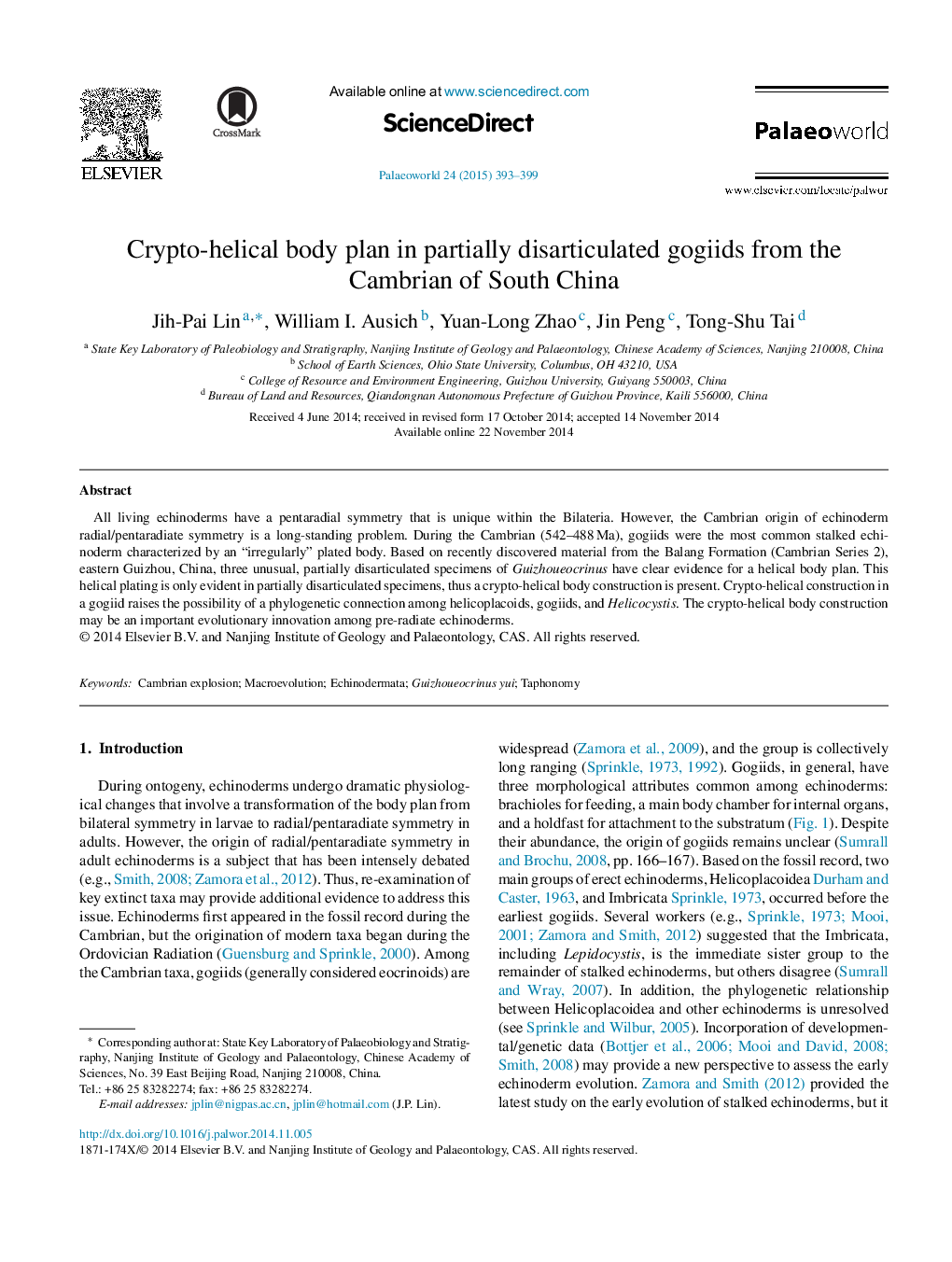| Article ID | Journal | Published Year | Pages | File Type |
|---|---|---|---|---|
| 4749703 | Palaeoworld | 2015 | 7 Pages |
All living echinoderms have a pentaradial symmetry that is unique within the Bilateria. However, the Cambrian origin of echinoderm radial/pentaradiate symmetry is a long-standing problem. During the Cambrian (542–488 Ma), gogiids were the most common stalked echinoderm characterized by an “irregularly” plated body. Based on recently discovered material from the Balang Formation (Cambrian Series 2), eastern Guizhou, China, three unusual, partially disarticulated specimens of Guizhoueocrinus have clear evidence for a helical body plan. This helical plating is only evident in partially disarticulated specimens, thus a crypto-helical body construction is present. Crypto-helical construction in a gogiid raises the possibility of a phylogenetic connection among helicoplacoids, gogiids, and Helicocystis. The crypto-helical body construction may be an important evolutionary innovation among pre-radiate echinoderms.
